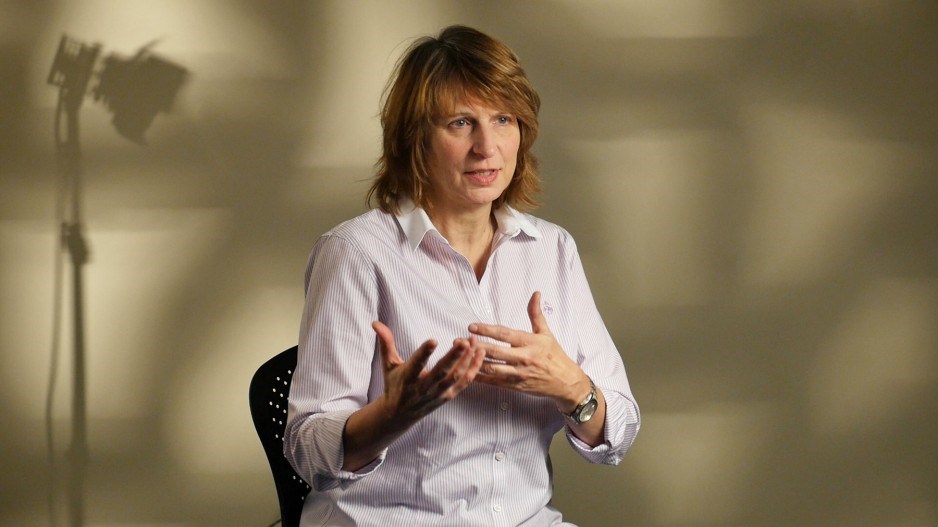It was a disheartening scene for Sharon McGowan’s students when she took her filmmaking class to the set of one Vancouver production.
“There must have been 100 people working on it, and the only women working on it were a script supervisor and one of the actors,” recalled the associate professor in film production at the University of British Columbia. “The students were like, ‘Oh my God, there’s no women and there’s no minorities.’”
Back in class, she said, the feeling among the students was that there wasn’t hope for many of the young people looking to break into B.C.’s $3.6 billion film industry.
McGowan, a film producer by trade who sits on the board of the Women in Film & Television Vancouver (WIFTV) advocacy group, is hoping a March 3 panel at the Vancouver International Women in Film Festival will come up with solutions to the problem that persists despite steeply rising demand for talent – projected to increase by as much as 21,000 workers by 2027.
A December 2019 labour market information report from Creative BC, the non-profit agency charged with promoting the province’s film sector, revealed 34% of below-the-line workers such as lighting technicians, camera operators, prop masters, hair stylists and makeup artists on the West Coast were women, compared with 48% of the province’s total workforce.
The gap persists among visible minorities, who represent 15% of below-the-line workers in the film sector compared with 29% of B.C.’s workforce.
McGowan said much of the current situation can be attributed to the way in which the heavily unionized industry operates, where organized crews jump from production to production through word of mouth.
“It’s not giving us the best possible workforce and the broadest base of talent to be competitive globally,” she said. “We need to change, we need to modernize, we need to take advantage of all of these amazing, talented people across all of the demographics of our province.”
Creative BC recommended in the report that industry pursue a mix of mentoring, better networking opportunities, targeted career marketing and developing a soft skills assessment tool to ensure new hires have a better success rate sticking around with a crew.
“But that’s actually what we’ve been doing for the last 30 years for women, and it doesn’t really work very well,” McGowan said.
WIFTV is proposing the province adopt an equity film incentive, offering financial benefits to companies that meet inclusivity targets.
The incentive, McGowan said, could work in the same way the province’s digital animation and visual effects incentive helps develop the local digital post-production subsector or like regional incentives that spread the film and TV production work to areas beyond the Lower Mainland.
“Dollars always speak loudest,” she said.
Meanwhile, Tina Strehlke, CEO of Minerva BC, said a mix of different approaches might be the most effective way to remove bias from entrenched systems.
“What we’ve seen in B.C. and in lots of parts of Canada is there’s a reluctance to utilize formal tools [such] as legislation,” she said, referring to the potential behind an equity film incentive. “There’s caution from the business community.”
Her organization’s 2019 Face of Leadership BC Scorecard revealed women held 20% of senior executive leadership jobs and 31% of board seats at B.C.’s top 50 companies.
“We’re still pretty under-represented and we’re being left out of industries and occupations that have high growth, high innovation,” Strehlke said.
According to February calculations from the Business Council of British Columbia, B.C.’s film and TV sector has grown at a “head-spinning clip” of 27% on average every year from 2015 to 2018.
Strehlke said the sector may soon have to come to terms with external factors as it finds itself strapped for workers.




